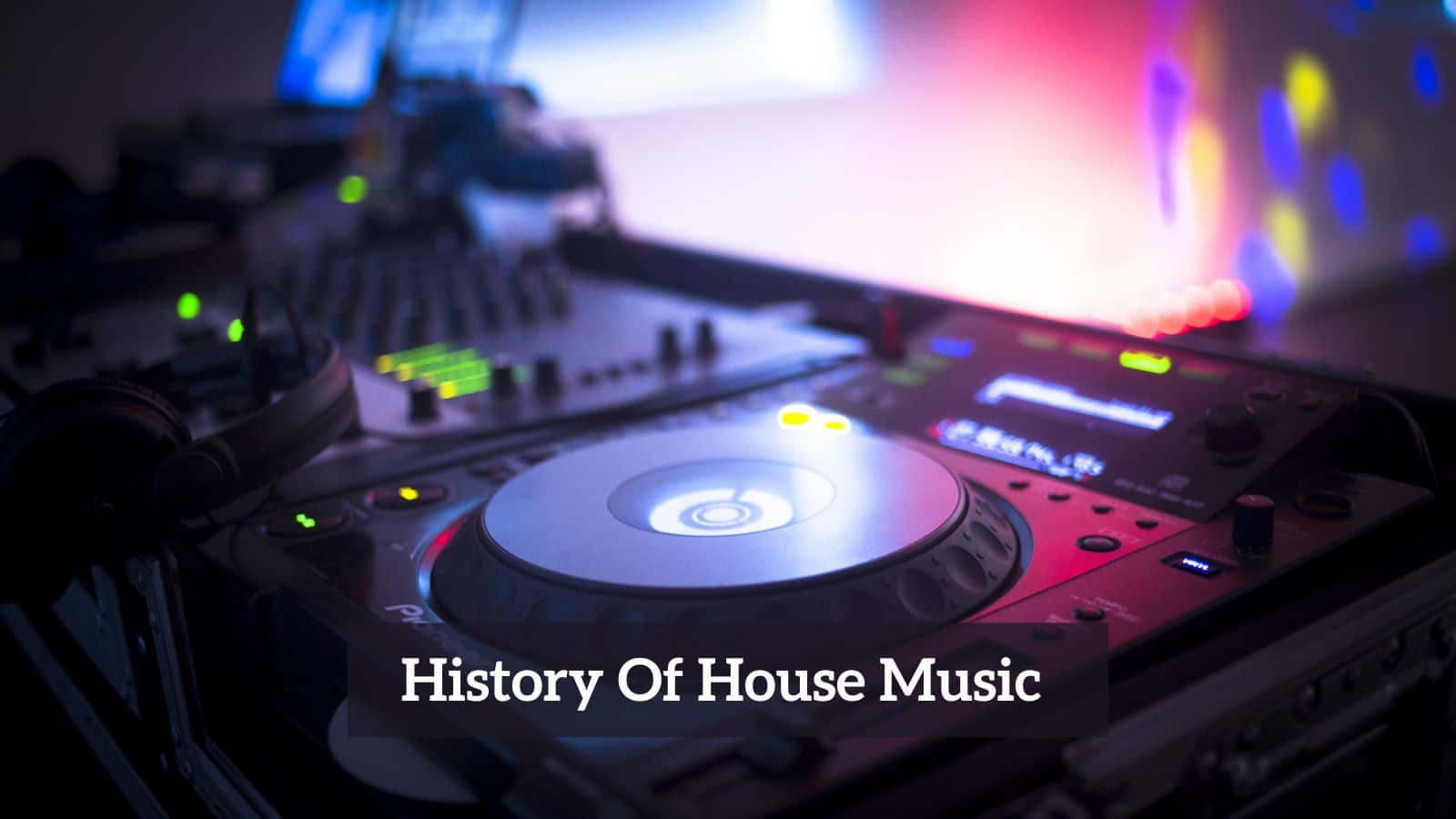
The genre called house music is something that encapsulates a wide range of subgenres that naturally evolved from the original concept. For some the notion that house stems back as far as the 1980s may be hard to believe, but this is where the story begins.
History Of House Music
What was significant in the evolution and development of popular music and particularly house music was the electronic revolution. The advancement of electronically produced music was becoming increasingly accessible to many musicians by the 1980s.
Tape recording was an affordable method of sound capture and synthesisers and drum machines began to filter into the popular music scene. This laid the foundations for house music.
The tape was Frankie Knuckles medium. Frankie is often heralded as the Godfather of House, working as a DJ at the legendary Chicago club called the Warehouse.
What made Frankie’s approach different was that he didn’t just play music on vinyl, but used a reel-to-reel tape machine to cut and spice music into new versions of the original.
He’d alter the speed of tracks, bring in drum breaks and beats fusing the role of DJ, composer and producer into one single entity. Frankie merged mixed and blended disco with soul, gospel and blues to create a completely fresh sound that became known as house music.
What characterised house music in the early days and going forward was the fast-paced four-on-the-floor kick beat coupled with robotic basslines, synths and sometimes full-blown vocal lines.
It was a dramatic change in musical direction from the 70s disco that had dominated the club scene through that period. By the mid 80s house had spread across the USA and crossed the ocean to make a lasting impact in Europe.
The record label that took the youth culture by storm was Chicago’s Trax Records. Listen out for Frankie Knuckle’s track Your Love and the remarkable Marshall Jefferson’s song Move Your Body.
It was at this stage in houses’ history that acid houses spun off from the original concept brought to life mostly by British DJs. One unfortunate side effect was that, as the genre’s name implies, the world of drugs and MDMA became intrinsically linked to this music.
Despite these links the music produced by many groups was innovative, pushing the limits of technology and style. One of the most celebrated is the album by Daft Punk from 1997 called Homework.
One of the central features of house music that still resonates with today’s writers of EDM is the sound of the Roland TR-808 drum machine.
This was one of the first pieces of studio kit with which composers and producers could programme a drum pattern without the need for music from any other sources. Tempo could be altered easily, drums sounds were editable and unlike a real drummer, it would never make a mistake.
This technology was not so expensive as the 80s progressed giving rise to a new cohort of bedroom producers.
With a drum machine, a four or eight-track cassette recorder, and a cheap synth you could begin to create your own house music. It might not sound significant in today’s technological tangle, but forty years ago this was ground-breaking.
As the 80s pushed forward the music that was established as house music, was driven by this new technology. Creators like Marshall Jefferson were making music that was raw and focused on getting people in clubs onto the dance floor.
The subgenres of the 90s continued to divide into smaller factions. Each variation of the original house music sound helped the genre gain an increasingly solid foothold across the world.
Not only did Acid House dominate the British club scene but other genres like electro house, witch house and an even more contemporary, tropical house. You began to hear well-established artists like Madonna adopt the characteristics of house in songs like her 1990 hit Vogue.
The traits of house are clearly audible in this hit song that opened the floodgates for other notable artists of the time to jump on the house wagon. Listen to Janet Jackson or Kylie Minogue for great examples of house incorporated into pop.
With the growing number of mainstream artists in the 90s and 2000s signing up to the house sound, the number of independent record labels hit an all-time high.
This in turn allowed emerging artists, DJs and producers to get their music heard by a wide audience in clubs, on the radio, on TV and on CD. The dance music culture was now a formidable institution that was to change the face of popular music forever.
One very fine example of a house fusion is a track from the early part of the 90s by Bizzare Inc. ‘Playing With Knives’ demonstrates how artists were melding styles within a genre. Here Bizzare Inc brilliantly blends house and rave into an impossibly impulsive, manic floor filler.
Of equal merit is the British creator Alison Limerick’s track ‘Where Love Lives’. When it first came to the public’s ears in 1990 it didn’t meet with the success it should have.
It took another six years and a re-mix for this classic to get properly noticed. In this track, you experience the seamless union of stolen pop hooks, layered vocals and deep house beats that makes this song priceless.
By the 2000s house in all its many forms was an unstoppable force in the music industry. What happened to house, like so many genres that begin on the outskirts of mainstream, is that they become so popular they become absorbed into the maelstrom of it all.
Deep House, Progressive House, Techno and Minimal House pushed forward. Artists like Deep Dish Sasha and Digweed were at the top of the scene.
Daft Punk blasted their way to the pinnacle of success in the late 90s and 2000s. David Guetta and Avicii became the wanted names at all festivals and took house permanently into the mainstream of popular culture.
From 2010 house was a hugely popular genre with Big Room House overshadowing many other subgenres.
Music from across Scandanavia, Europe and the US flooded the market. The Dutch brought Dirty Dutch to the party with darker beats.
The Canadian innovator and producer Dearmau5 shot to fame with his unique blend of genres and in the UK Calvin Harris smashed the charts with a more mainstream sound in hits like One Kiss and Promises.
Now in 2023, House is very much alive and dancing. Listen to Lady Gaga’s album Chromatica or Drake’s Honestly, Nevermind that sees him returning to his roots.
Even Beyoncé’s massive hit album titled Renaissance used elements of house. It’s a tremendous story of success against the odds, but perhaps a comfort to know that house is now here to stay.


